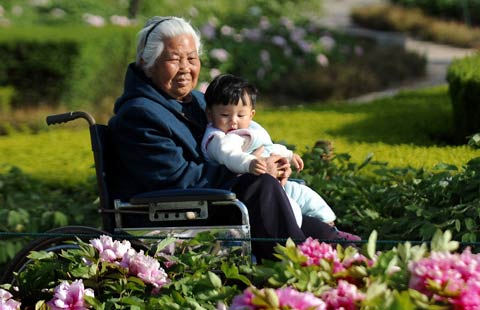Show unveils foreign artists in Germany
Updated: 2014-12-09 07:29
By Yang Feiyue(China Daily)
|
|||||||||||
Artists who relocated to Germany are getting a new platform for their work at the Central Academy of Fine Arts Museum in Beijing. The exhibition will run through Jan 5.
Art Space Germany is jointly presented by the Goethe Institute China and the museum. It features 15 stars from the contemporary art world.
The artists, including Tony Gragg, Armando and Candice Breitz, moved to Germany for art - reminiscent of the way artists in the previous century moved to Paris and New York. On display are 44 artworks covering video, sculpture, installation and paintings.
"We hold the exhibition because, in the globalization age, an open China needs diversified art elements and forms," says Wang Chunchen, director of curatorial research at the museum.

The exhibition is part of the museum's global exhibition season, which began in October and displayed arts from foreign countries such as Belgium, Switzerland and Denmark, says Wang.
The global exhibition season aims to explore answers to the question of how a country's culture is to be presented and to be made available to others.
"We gladly present the Art Space Germany in China, which focuses on the way in which foreign artists living in Germany influence the German art scene," says Peter Anders, director of the Goethe Institute China.
The exhibition has added artworks by Chinese artists living in Germany to emphasize the relevance of the two countries in entering into culture dialogue, according to Anders.
The exhibition breaks the stereotype that German culture can only be represented by artists born in Germany, says Ursula Zeller, the exhibition's curator.
"The exhibition does not want to export German art traditions, nor to juxtapose non-Western and Western art, nor to rehabilitate art from outside Europe," says Zeller.
It reflects a piece of German normality, and aims to use fine arts to show the emergence of an intercultural climate employed by migrating artists to stimulate, enrich and change a national art scene, Zeller says.
"All the selected artists have decided to live in Germany of their own volition. They are first-generation migrants who bring views, knowledge and stimuli from the outside," Zeller says.
One of the artists involved in the exhibition, South Africa-born Breitz, decided to move to Berlin after living in New York for 10 years.
She made the decision because the inclusive German culture didn't make her feel like she was "only" a foreign artist, and she had both opportunity and freedom to create.
Her work on display features video interviews with a pair of Korean twins living in Canada; she wanted to find out how two individuals born and raised in similar experiences can turn out to be different and how they influence each other's life.
After the Beijing show, the exhibition will also be presented in other areas of China, including Nanjing, Wuhan, Chengdu, Hangzhou and Chongqing.
yangfeiyue@chinadaily.com.cn
(China Daily 12/09/2014 page19)
Today's Top News
Former French PM celebrates China Daily's Climate Watch debut
Mapping global capital flows
Irish president urges science, technology co-op with China
Former Scottish first minister to seek UK Parliament seat
Chinese military planes send water to Maldives
Prince William and Kate arrive on first trip to NYC
Chinese help sought in UK name game
US, Britain pledge to support Afghanistan
Hot Topics
Lunar probe , China growth forecasts, Emission rules get tougher, China seen through 'colored lens', International board,
Editor's Picks

|

|

|

|

|

|





